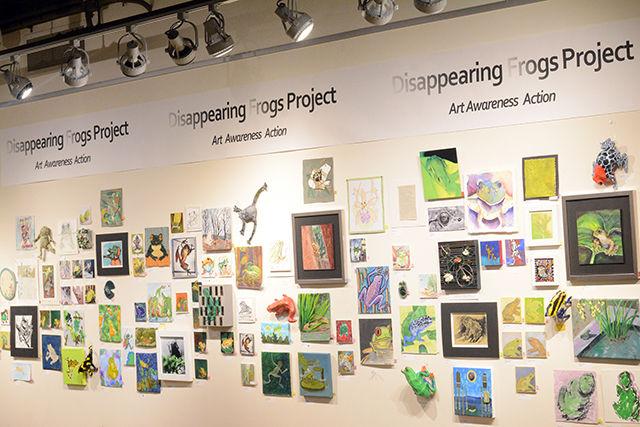Last Wednesday marked the kickoff for NC State’s Craft Center’s Disappearing Frogs Project, an artist-activist’s approach to a growing problem. The exhibit features a multitude of artists’ frog-themed pieces in an attempt to raise awareness for widespread amphibian decline.
Though officially in its third year, the project finds its beginnings about 10 years ago, when Charlotte-based artist Terry Thirion learned about the shrinking population of frogs.
“I was surprised about that; I’d never heard of it happening,” Thirion said. “A professor from Berkeley had been doing a study on how certain chemicals effect frogs. Some of them become hermaphrodites, some of them grow five, six legs.”
Chemical exposure is only one of the problems frogs face. Amphibians are experiencing expansive habitat loss and modification, complications from climate change, as well as overharvesting for food or as pets. Due to their semi-permeable skin, they are also sensitive to water quality changes.
“Amphibians are one of the most endangered groups of vertebrates on the planet,” said Bryan Stuart, herpetologist and curator of reptiles and amphibians at the North Carolina Museum of Natural Sciences. “They seem to be declining at extremely rapid rates in terms of populations and species disappearing.”
However, some influences are more enigmatic in nature. The vast changes in population are hard to completely account for.
“We’ve lost more than 200 species in the past 30 years that we know of,” said Rachel Hopkins, the North Carolina Youth Conservationist of the Year and speaker at the opening. “[In] farming and agriculture, it’s very important that you have a healthy amphibian population to keep pests under control in a way that’s monetarily lucrative and safe for the environment.”
Generally, frog health is typically a good representation of environmental conditions, acting as a bioindicator. Their respective problems may be a warning of ubiquitous negative changes throughout the earth’s entirety.
“Frogs have survived all six major extinctions in the history of our world,” said Joli Stavish, a sophomore studying zoology. “They’ve survived ice ages, and now, since humans have been here, we’ve changed the world so much that they can’t adjust to it.
The project’s goal is to inspire people to take action to protect amphibians and to also provide artists with an opportunity to support amphibian conservation, education and research. Profits are made from selling the art pieces, which range in prices as low as $25. Profits are then put into action through the Amphibian Survival Alliance.
“I think it’s important just to get people aware,” Stavish said. “A lot of people don’t know that this is even an issue. We really have to get everyone in on it to make a difference.”
The exhibit is running in the Crafts Center until March 3.








